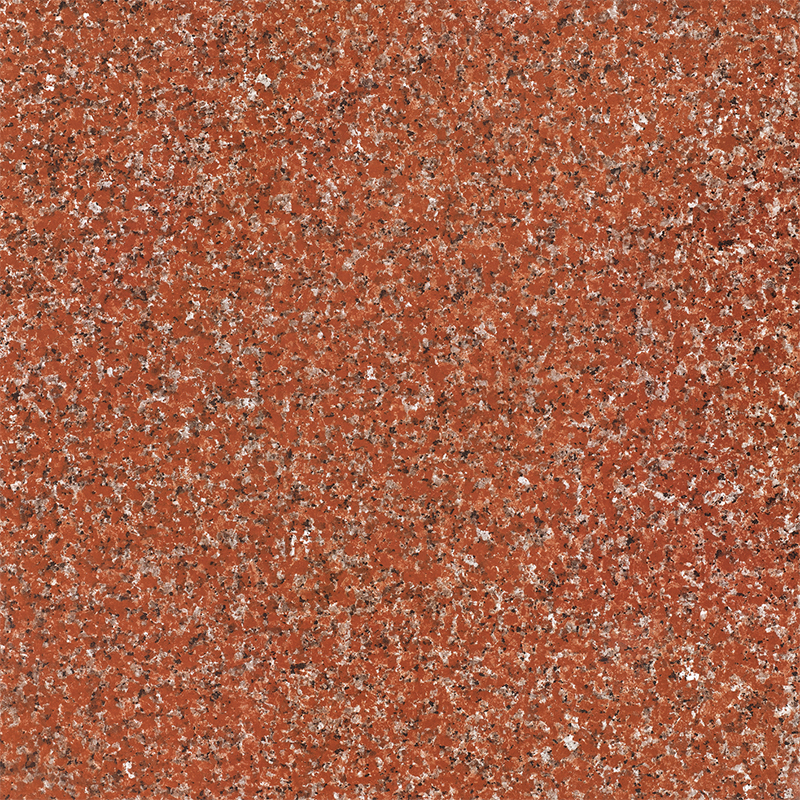How can the low-temperature firing technique for high-grade antique bricks ensure the quality of the glaze?
Release Time : 2025-11-10
The low-temperature firing technology for high-grade antique bricks requires a multi-dimensional approach involving raw material selection, formula optimization, process control, and equipment improvement to ensure stable glaze quality while lowering the firing temperature. The core challenge of low-temperature firing lies in balancing the glaze's melting effect with the body's strength, avoiding defects such as poor glaze gloss, pinholes, and bubbles caused by insufficient temperature. The high requirements for glaze texture, wear resistance, and stain resistance in high-grade antique bricks necessitate precise control of the firing process.
Raw material selection is fundamental to low-temperature firing. While limestone, used as a flux in traditional glazes, lowers the melting temperature, it easily produces volatile substances, affecting the glaze's smoothness. High-grade antique bricks often use wollastonite instead of limestone, which has an even lower melting temperature and no volatilization, significantly improving glaze density. Simultaneously, the introduction of nepheline syenite to replace some feldspar as a flux in the body broadens the firing range and enhances the bonding between the body and the glaze, reducing glaze cracking caused by mismatched coefficients of thermal expansion.
Formula optimization requires balancing the melting characteristics of the glaze with the compatibility with the body. High-grade antique brick glazes are mostly matte, and a composite formula of calcium, magnesium, and zinc can achieve a natural, vintage effect. Calcium-based matte glazes offer stable color development, but the proportion of limestone or double-flying powder needs to be controlled to avoid fluctuations in glaze properties. Excessive magnesium content increases the glaze expansion coefficient, affecting the flatness of the body; excessive zinc reduces the firing range, requiring experimental determination of the optimal ratio. Furthermore, adjusting the ratio of SiO₂ to Al₂O₃ can control the glaze gloss; reducing SiO₂ and increasing Al₂O₃ helps achieve a matte glaze effect, while ensuring the aluminum-silicon molar ratio is within a reasonable range to maintain the mechanical strength of the glaze.
Process control is crucial for ensuring glaze quality. Low-temperature firing requires strict control of the moisture content of the body entering the kiln. Excessive moisture content prolongs the evaporation period, leading to temperature fluctuations during preheating and easily causing pinholes in the glaze. By increasing the temperature of the green body entering the kiln to over 200℃, the evaporation period can be shortened, allowing for a rapid entry into the oxidation and decomposition stage. Simultaneously, the thickness, shape, and size of the green body must meet the requirements of rapid firing. Overly thick or complex-shaped green bodies are prone to cracking due to excessive internal temperature differences, while flat, thin green bodies are more conducive to heat conduction, reducing firing defects.
Improvements in kiln structure and combustion methods significantly impact glaze quality. Traditional kilns have poor sealing and insufficient insulation, easily leading to hot air loss and a drop in kiln temperature. Using lightweight, high-temperature refractory materials such as ceramic felt and ceramic fiber can reduce heat loss and improve temperature uniformity within the kiln. Adding auxiliary burners allows for flexible adjustment of the preheating zone temperature, preventing uneven glaze melting due to excessive temperature gradients. Furthermore, installing stirring nozzles and hot air nozzles can reduce the temperature difference between the upper and lower parts of the kiln, ensuring synchronous glaze melting and reducing glaze bubble formation.
Fuel selection and improved combustion efficiency are equally important. Incomplete combustion of traditional solid fuels easily produces ash, contaminating the glaze surface. Liquid fuels such as heavy oil and light diesel, or gaseous fuels such as natural gas and liquefied petroleum gas, burn more completely, reducing impurity adhesion. The high-speed gas flow creates intense stirring within the kiln, ensuring even heating of the products and preventing localized overheating or undercooling, thereby improving the glaze's gloss and density.
The low-temperature firing technology for high-grade antique bricks requires comprehensive optimization of raw materials, formulas, processes, equipment, and fuels. Through scientific proportioning and precise control, it is possible to lower the firing temperature while ensuring that the glaze texture, wear resistance, and stain resistance meet design requirements, achieving a balance between high-efficiency production and high quality.







